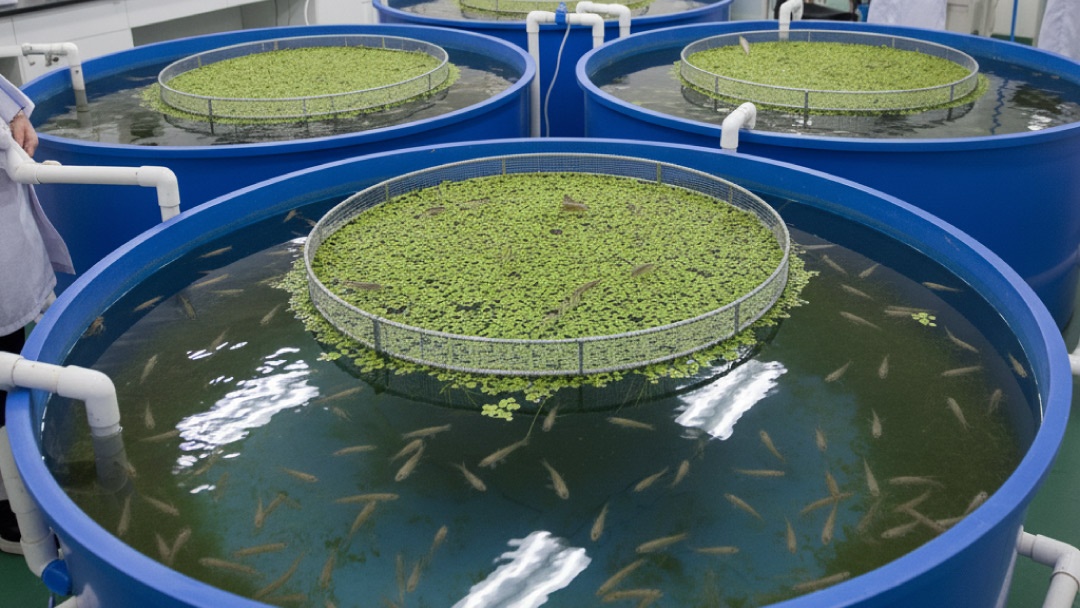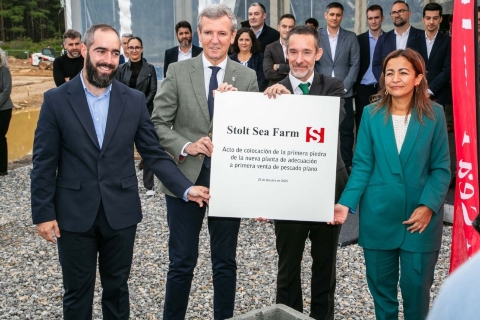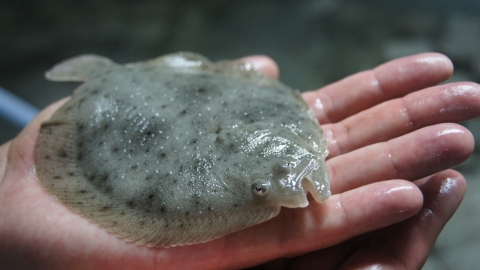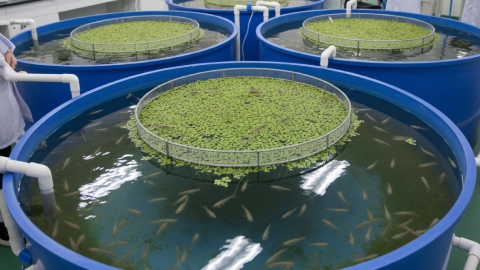
A multi-trophic system combining duckweed and biofloc for the production of tropical vannamei shrimp (Pennaeus vannamei) could solve the dilemma facing European producers due to its high feed efficiency and greater environmental sustainability, potentially better offsetting high energy costs.
Vanname shrimp production in Europe – typically based on Recirculating Aquaculture Systems (RAS) – faces a duel pressure: elevated operational costs, particularly for energy and feed, and strict environmental regulations.
A recent study by researchers at Shanghai Ocean University on a mult-trophic duckweed and biofloc system believes it has the answer to this challenge. The key to viability lies in rapid payback and lower production costs.
In the study, conducted in controlled indoor culture tanks, researchers achieved an FCR (Feed Conversion Ratio) of just 1.31, which is significantly lower than traditional biofloc systems, which typically reach 1.66.
Given that feed is the largest variable expense, this efficiency immediately reduces production costs, helping to offset the high energy expenditure required by such technologies in Europe, as the cold climate necessitates water heating.
Furthermore, the economic analysis from the study confirms that the additional investment required to implement the duckweed component can be recovered in as little as 6 to 8 months. The increase in cultivation performance is so substantial that it quickly surpasses the initial outlay.
With survival rates exceeding 84% and better overall shrimp health, producers can guarantee a greater biomass in each cycle, thus maximising the installed capacity of the RAS.
Moreover, the system radically improves water management performance. The duckweed acts as an active nutrient ‘sink’, achieving the apparent removal of total nitrogen and total phosphorous. This drastically reduces the risk of water accumulation that destabilises the RAS system and ensures compliance with the most demanding discharge regulations.
By harvesting the duckweed, the European producers converts a waste product (nutrients from the water) into a valuable biomass, which can be used as a feed ingredient for fertilizer, thereby closing the circular economy loop.
Finally, the biofloc-duckweed system is not only more efficient but also producers a higher-quality shrimp, a key element for positioning the product in the European gourmet market. The direct consumption of duckweed by the shrimp improves its intestinal morphology and immune capacity, transmitting into more robust animals.
Additionally, the final product exhibits lower moisture loss during processing, resulting in a better texture and quality of meat, suitable for justifying a premium price in the local market.



